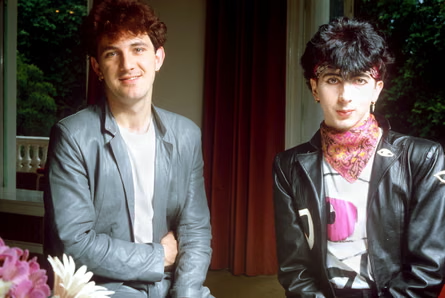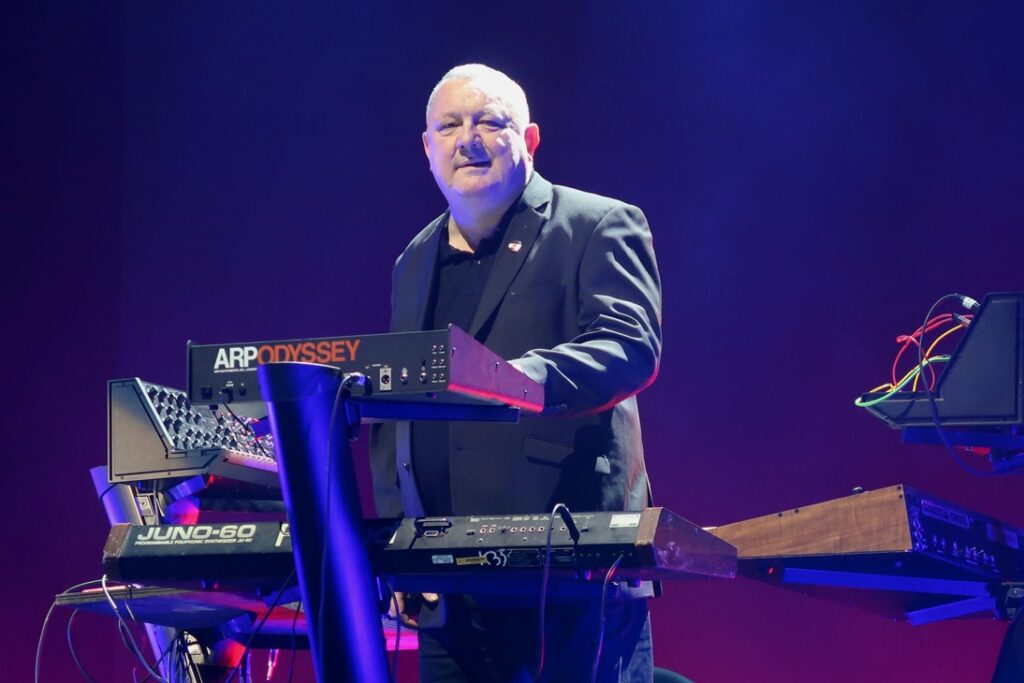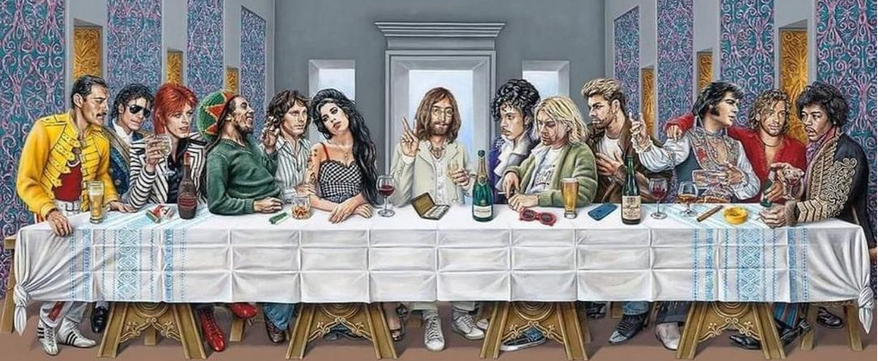
David James Ball (1959–2025): A Biography
David James Ball (May 3, 1959 – October 22, 2025) was a British producer, composer, and electronic musician best known as the instrumental mastermind behind Soft Cell, the pioneering synth-pop duo he formed with vocalist Marc Almond. While Almond delivered the lyrical drama and theatrical presence, Ball built the electronic architecture that defined Soft Cell’s moody, neon-lit sound. Throughout a career spanning more than four decades, Ball’s quiet innovation helped shift electronic music from niche experiment to mainstream force.
Early life and musical awakening
Dave Ball was born in Chester and adopted as an infant, later growing up in Blackpool, a seaside town whose vibrant nightlife, amusement arcades, and soul-club culture made a deep impression on him. Surrounded by slot-machines, flashing lights, and pop spectacle, he developed an early fascination with the relationship between electronics, entertainment, and emotion — a fascination that would ultimately shape his creative life.
He did not initially set out to become a professional musician; instead, he enjoyed tinkering with electronics as a teenager, wiring small amplifiers and experimenting with simple instruments. At the same time, he fell in love with the forward-thinking sounds emerging from Europe in the 1970s — particularly the hypnotic, synthetic innovations of Kraftwerk. The revelation that machines could create music as emotionally compelling as guitars or pianos would orient his future direction.
Ball attended Arnold School before pursuing Fine Art at Leeds Polytechnic in 1977. It was in Leeds — a city brimming with punk defiance and post-industrial noise — that he would meet the person who would change his life and vice-versa: Marc Almond. The two young artists connected over their mutual appreciation of the strange, the theatrical, and the electronic. What began as an art-school collaboration would soon become one of the most influential synth-pop partnerships in British music.
Soft Cell: the rise of electronic outsiders
Dave Ball and Almond formed Soft Cell in 1978. Unlike many emerging new-wave groups, they embraced the idea that two people — one voice and one synth-operator — could be a band. Ball, increasingly skilled at sequencing, drum-machines, and sound design, built Soft Cell’s sonic identity: sleazy yet stylish, minimalist yet explosive.
Their early gigs in Leeds were raw experiments — abrasive electronics clashing with Almond’s cabaret-tinged vocals. But the duo quickly found a formula that connected with the club scene, leading to their breakthrough moment: a radical reimagining of “Tainted Love,” a northern-soul cult favorite. Ball transformed the song with punchy drum-machine rhythms, arpeggiated synthesizers, and a pulsing bass sequence that made the track unforgettable.
.
Released in 1981, “Tainted Love” became a massive international hit — No. 1 in the UK and a sensation worldwide. Its influence cannot be overstated: it proved electronic pop music could dominate charts, clubs, and cultural consciousness all at once. Ball’s programming gave the song its icy gloss, while his deep connection to soul and club culture preserved its emotional heart.
Following this meteoric rise, Soft Cell released their debut album Non-Stop Erotic Cabaret — a landmark of dark electronic pop. Ball’s production framed every track with a sense of cinematic neon noir: pulsing synths, machine beats, and urban melancholy. Songs such as “Bedsitter” and “Say Hello, Wave Goodbye” captured the chaos of nightlife and longing with a cool intensity.
Soft Cell were not just making hits; they were creating a new genre aesthetic. Where many synth-pop acts leaned toward futurism and sheen, Soft Cell reveled in shadows — sleaze, glamour, heartbreak. Ball’s electronics conjured the aura of dingy clubs and late-night wanderings through city streets lit by artificial glow.
Experimentation and increasing complexity
Their second album, The Art of Falling Apart (1983), pushed further into experimental territory. Ball layered harsher synthesizers, hypnotic rhythmic structures, and innovative sampling techniques. While the record was less commercially dominant than their debut, it became beloved among fans for its risk-taking spirit.
However, the whirlwind of fame brought its own consequences. The early-’80s pop industry was unforgiving, and the intense touring, media spotlight, and rampant excess took a toll. Soft Cell’s third album, This Last Night in Sodom (1984), reflected their spiraling personal circumstances: aggressive electronics, darker themes, and a palpable sense of collapse. Following its release, the duo announced their split.
Dave Ball, often described as the calmer and quieter of the pair, nevertheless felt the strain. But he remained driven by curiosity — and he never abandoned music.
Beyond Soft Cell: exploration and reinvention
The mid- and late-1980s became a period of wide-ranging exploration for Dave Ball. He released a critically acclaimed solo album, In Strict Tempo, collaborating with underground and avant-garde artists. He then formed new projects — most notably Other People and English Boy on the Loveranch — diving into the burgeoning world of dance-floor culture.
But his most significant post-Soft Cell venture was The Grid, formed around 1988 with Richard Norris. As electronic dance music surged into mainstream prominence across Britain, The Grid blended acid-house, techno, and pop, with Ball’s sequencing and production driving their sound. Hits such as “Swamp Thing” — a surreal fusion of banjo and rave energy — demonstrated Ball’s refusal to stick to predictability. If electronic music offered new toys, he wanted to play with all of them.
During this time, Dave Ball also evolved into a respected producer and remixer, contributing to the work of major artists across pop and alternative scenes. His ability to merge experimental sounds with accessible structure made him a sought-after collaborator.
Reuniting the synth-pop legacy
The cultural revival of ‘80s electronic music in the late 1990s and early 2000s reminded audiences how ahead of their time Soft Cell had been. Ball and Almond reunited in 2001, leading to live performances and — in 2002 — a new studio album: Cruelty Without Beauty. Ball’s production felt both nostalgic and contemporary, proving that Soft Cell had never been defined solely by the tides of a particular decade.
Dave Ball continued to explore new sonic landscapes, releasing Photosynthesis in 2016 with classically influenced textures. He also published his autobiography, Electronic Boy, offering an unfiltered look at his journey through music, nightlife, and technology.
Soft Cell reunited once again in the 2020s, creating fresh music — including the well-received album Happiness Not Included (2022). Fans young and old celebrated the duo’s triumphant return, and Ball once again graced arenas with performances that showcased both his technological sophistication and deep emotional connection to his craft.
Even as health issues occasionally challenged him, Dave Ball remained creatively active, committed to evolving his sound rather than simply preserving a legacy.

Musical style and innovation
Dave Ball’s musicianship was defined by a few key qualities:
1. Sonic Architecture
He approached synthesizers not as substitutes for traditional instruments but as sculptural tools capable of creating entirely new atmospheres. Space, repetition, and texture were just as important to him as melody.
2. Minimalism with intensity
Soft Cell tracks often used surprisingly few parts — a drum-machine pulse, a bassline, a single icy pad — yet Ball arranged them with pinpoint precision, creating addictive momentum.
3. Emotional electronics
Ball resisted the stereotype that machine-based music was cold or detached. His arrangements embraced vulnerability, nightlife yearning, and the grinding tension of desire.
4. Genre-bending curiosity
Throughout his career he refused to settle, moving fluidly between synth-pop, house, industrial textures, and cinematic composition.
His work quietly pioneered many techniques still essential to modern pop and electronic production.
Partnership with Marc Almond
The creative relationship between Dave Ball and Almond became one of the most fruitful contrasts in pop music. Almond was flamboyant, visceral, and dramatic — the emotional storyteller. Ball was calm, grounded, and technical — the builder of worlds.
Their chemistry was not always easy, and they each navigated personal struggles along the way. Yet time and again they returned to each other — proof that something rare existed in the space between voice and machine.
Their reunions never felt purely nostalgic; they were two artists who had grown separately and discovered once more what they could uniquely create together.
Later life and passing
In his final years, Dave Ball continued making music, DJing, and engaging with fans who drew inspiration from his decades of innovation. Despite health challenges, he remained dedicated to his instruments and to the artistry that had defined his life.
Dave Ball died peacefully in his sleep at his London home on 22 October 2025, aged 66.
Legacy: the quiet revolutionary of synth-pop
Dave Ball’s influence extends far beyond Soft Cell’s most famous hit. He helped prove that:
- Electronic music could be emotional
- A duo could create a world every bit as rich as a full band
- Dance culture and pop storytelling could beautifully merge
- Technology and humanity are not opposites, but collaborators
Without Ball’s contributions, the path for many later electronic artists — from British synth-pop to electroclash to modern darkwave — might have looked very different. His music continues to inspire both underground producers and chart-topping pop acts.
Above all, Dave Ball showed that innovation doesn’t always require a loud personality. Sometimes, it comes from the person quietly programming beats into late-night machines — finding new ways to make circuitry feel like a beating heart.
Conclusion
Dave Ball was more than a hitmaker. He was a cultural bridge between nightclub hedonism and emotional storytelling, between avant-garde experimentation and beloved pop melodies. A self-taught craftsman who transformed curiosity into influence, he helped define what electronic music could be — and how deeply it could resonate.
He leaves behind catalogues of music that feel both timeless and forward-looking, reminding us that the future of sound is always shaped by those willing to push a few buttons no one else thought to press.
Dave Ball’s machines may have gone quiet, but the reverberations of what he built continue to pulse across dance floors and through headphones around the world — neon-lit, heartfelt, and unforgettable.
Check out Dave Ball on Amazon by clicking here.
Check out Soft Cell on Amazon by clicking here.
If you found this interesting please share it with your friends and family, and check out some of our other articles on Musicians who Died in 2025.


Soft cell were great. So sad to “wave goodbye”